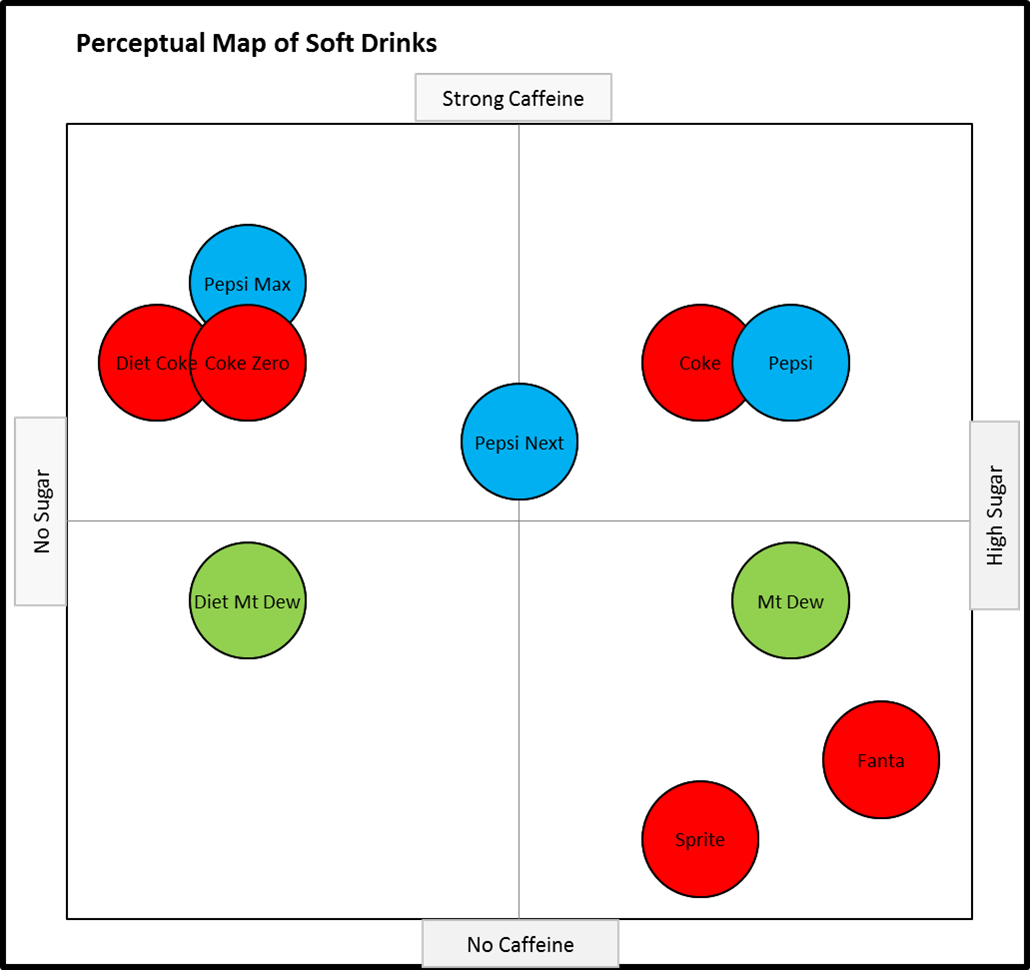Description of the Target Market
The Coca-Cola Company is the second largest soft drinks company in the UAE after Pepsi Cola. The company had entered the market earlier, but it faced low sales volume and discrimination from the buyers for its perceived association and support for Israel. As one of the countries in the Middle East, the United Arabs Emirates market for soda is not as saturated as the counterparts in the United States and Europe (Coca-Cola UAE among, 2010). Still, the brand takes an important place in the beverage industry. The target market in Coca-Cola embraces a variety of social groups. Thus, it is not directed to any specific audience. However, the prevailing number of the customers are young people in their 20th and 30th. Therefore, the accent in the target strategy is put on youngsters, who value active lifestyles and entertainments. Nevertheless, Coca-Cola presupposes that any client may become a potential customer. That is why, mass customization is practiced.
Market Segmentation and Relevant Segmentations
The marketing techniques of Coca-Cola in UAE differ from the basic corporation strategies. Thus, despite Coca-Cola in the USA is delivered to the customers through mass marketing, the Arabic subsidiaries focus on differentiated marketing, according to several limitations. In this context, one differentiates several segmentation types in UAE. These are geographic, climatic, and demographic segmentation.
The UAE is highly agricultural country. However, the general state of the economy in the Arabic states does not allow the citizens of rural areas to access market in a full area. Therefore, due to geographic segmentation, the Coca-Cola production targets exclusively urban citizens, which predetermines its minor marketing type.
Climatic segmentation refers to the weather conditions in the Arab world. Since the country is characterized by hot climate, it is relevant for the company to sell only cold products. This implication is particularly relevant for the summer season.
Finally, according to demographic segmentation, Coca-Cola directs its separate products to the specific social groups. Thus, the UAE citizens with high incomes usually purchase soda water in Coke Tin bottles, which are non-returnable. However, the target audience, which has lower income, prefers Coca-Cola in the returnable glass bottles. Moreover, the segmentation of the company relies on the age of the target market. Therefore, the designs, which attract young people, are selected (Langlois, Langlois, & Havens, 2012).
Coca- Cola’s Positioning Strategy
One of the ways that the company has positioned itself is through maintaining Coke as its core product. However, the company also tries to adapt to the local needs of the people (Deichert, Ellenbecker, Pesarchick, Klehr, & Ziegler, 2006). In effect, Coca-Cola applies strategic positioning to ensure that it has a uniform image worldwide. Further, the company positions itself as emotionally sensitive to the needs of the people (Langlois et al., 2012). Some adverts portray the products as fun and infuse a happy spirit among people. The positioning strategy, which is represented by the company, refers to the properties of the specific soda water and, therefore, matches it to the needs of the customers. Since the primary target audience includes active and energetic people, the company positions its production as the high-sugar beverages, which are rich in caffeine (see Figure 1).

Product Strategy
Coca-Cola products in the UAE have entered the mature stage, owing to the large group of loyal consumers. Consequently, the sales of the company can only be manipulated through effective marketing and differentiation. The strategic tactics of the company include packaging and size differences between the separate Coca-Cola products. Thus, today, the beverages are sold in sustainable ecology-friendly packaging types, which are made of such reusable materials as, for instance, glass. Moreover, the corporation links Coca-cola versions to the clients’ needs. For instance, Cola Light was introduced so that to please the sportive people, who value healthy lifestyles.
Product level is divided into three levels. These are the core product, actual product, and augmented product. The company embraces an extensive diversification and increases of the product ranges. Still, they also stick to the core brand. Coca-Cola’s core product is soda and its range of soft drinks, as this is what customers buy to quench their thirst. Soda water is an actual product at the same time. Since the type of drink is refreshing, it satisfies climate segmentation and matches the expectations of the customers. The actual product refers to the packaging, the features, and the parts that help to deliver the core product (Armstrong, Adam, Denize & Kotler, 2014). Thus, most people in the UAE purchase the drink because of the quality and taste of the drink and how it is packaged. Finally, the augmented product is the extra service and benefits that come with the purchase of the drinks.
New product development requirements
There are a few or no product requirements that the Coca-Cola Company should follow in the UAE. Various tests that have been conducted on the drinks alongside other soft drinks by the Abu Dhabi Food Control Authority have shown that the Coca-Cola products are in line with the regulations and standards of the UAE. However, following recent consumer protection legislation, the company should adhere to the rule of not producing 300 Ml canned soda (Russell, 2012). The country has banned the production of these soda capacities, citing a violation of consumer rights, as they are not worth the price.